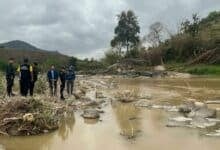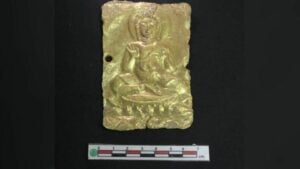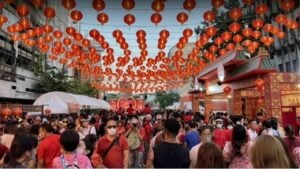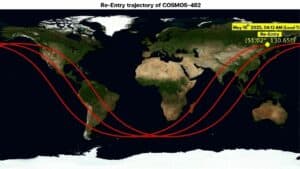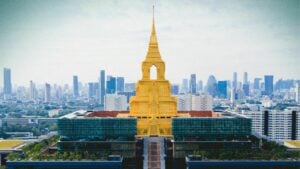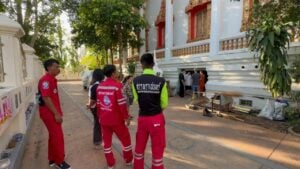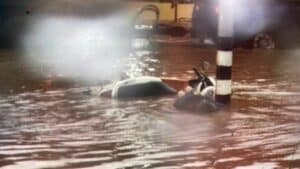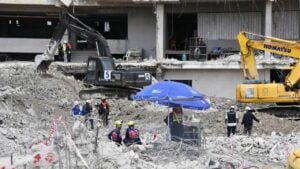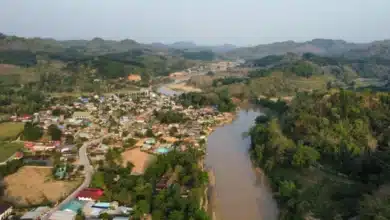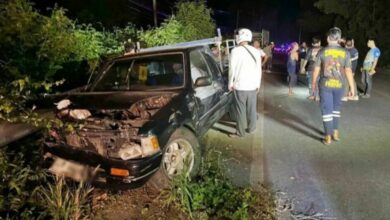Bangkok fiddles whilst Chiang Mai burns – who’s behind the annual smoke season?
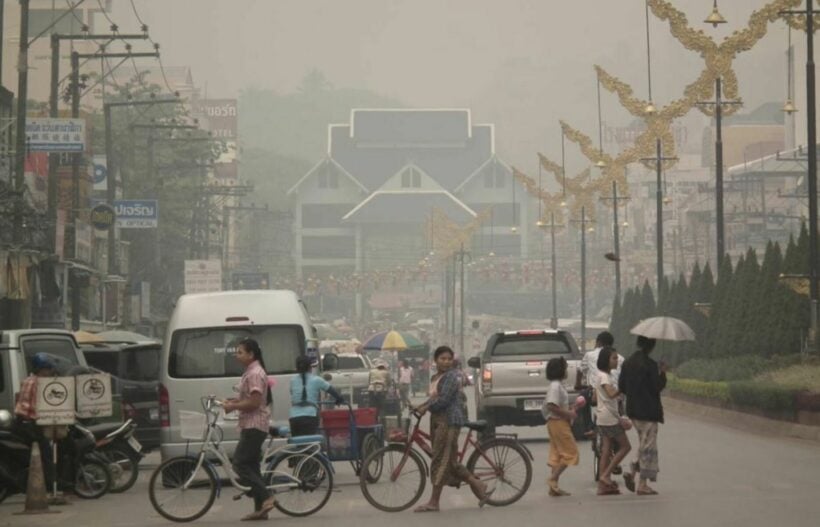
OPINION
In the December 2020 outbreak of Covid in the seafood markets along the coast of Samut Sakhon Burmese migrant workers, many of them entering Thailand illegally, bore the brunt of the blame. The Thai media reported widely that it was the fault of the illegal migrants. But the source of the migrants, trafficking gangs working for larger corporations to bring cheap labour into the country, was little reported.
Similarly, the farmers in Thailand’s far north are weathering much of the blame for the burning of bio-waste, crop preparation and pre-harvesting of sugar cane, and the clouds of smoke and smog it causes. Again, there has been little focus on the multi-national corporations and conglomerates who put the famers under incredible pressure to provide quick and cheap crops, and grow food to feed livestock before they are slaughtered for their other products.
Charoen Pokphand is Thailand’s largest and most prominent agriculture business.
In the CP document “Maize Factsheet 2021” it says…
“…since the severe haze crisis in 2015, joins society in all sectors to solve the problems that arise, and also realises the importance of social and environmental responsibility.”
Maize remains the largest component of animal feed. It is mixed into food for chickens, pigs, ducks, cows and even fish. Wheat and soy are also part of the mixture for the livestock menu, again grown almost entirely in Thailand’s north for local livestock consumption.
“Maize Factsheet 2021” also lists the CP policy “not to encourage planting in mountainous areas or conserved forest areas”.
The document say all the right things, in the usual corporate gobbledegook, but the proof is in the pudding and that proof floats across the skies of northern and northeastern Thailand every day during the annual crop-burning season, roughly from January to April each year. Inconveniently, the season fits in with the lighter north-easterly airflow, the reversal of the wet season monsoon, which blows the smoke and air pollution south into central Thailand, Bangkok, and sometimes even further south.
The previously lush, green mountainous regions of northern Thailand turn into a choking hell from the maize, sugar and rice plantation burn-offs. Despite CP’s carefully curated words, the problems in the north becomes worse each year.
Today (Sunday, March 21) Chiang Mai ranks the world’s 4th worst air pollution in the world, a ranking it often tops this time of the year. The rankings are put together, in real time, by AirVisual.com.
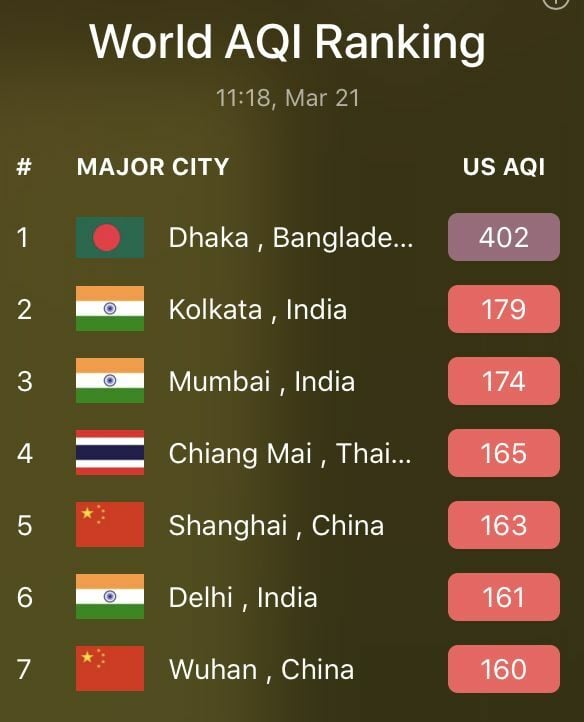
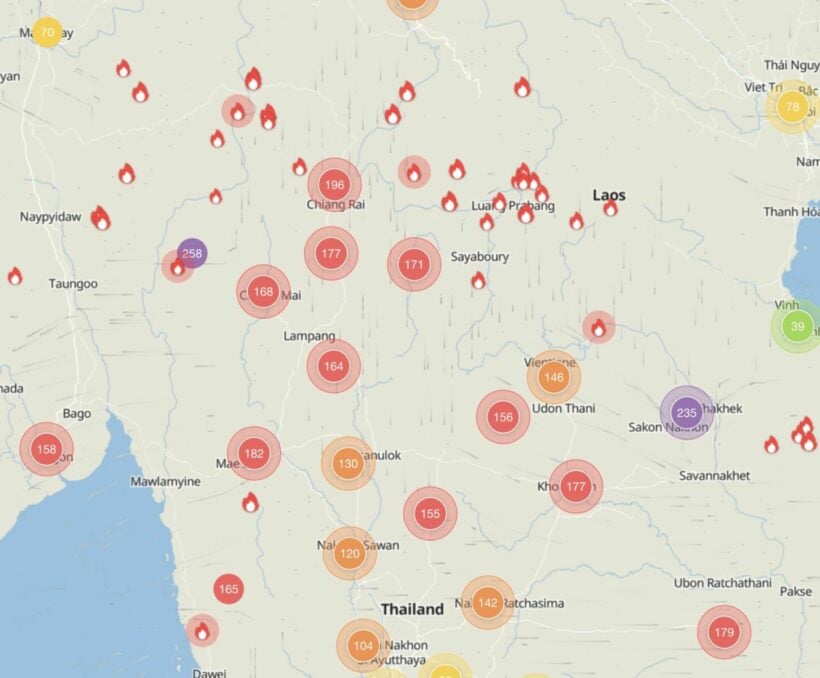 The ASEAN Agricultural Commodity Outlook report in 2016 reported that maize (corn) plantation areas in Thailand increased by 77,880 hectares between 2008 and 2015. But even the 4.6 million tonnes of corn produced in 2015 still only provided 90% of the nation’s demands – there was none left over to export. The demands for livestock feed have increased yearly since then with a resulting increase in air pollution. And severe cases of respiratory disease.
The ASEAN Agricultural Commodity Outlook report in 2016 reported that maize (corn) plantation areas in Thailand increased by 77,880 hectares between 2008 and 2015. But even the 4.6 million tonnes of corn produced in 2015 still only provided 90% of the nation’s demands – there was none left over to export. The demands for livestock feed have increased yearly since then with a resulting increase in air pollution. And severe cases of respiratory disease.
Last week it was reported that over 250,000 people are suffering from respiratory and related diseases in Thailand’s north. Suwanchai Wattanayingcharoenchai, director-general of the Department of Health, was quoted in Bangkok Post saying that the medical issues are due to excessive PM2.5 dust particles in the atmosphere as a result of local wildfires and burn offs that have produced heavy smog in the region.
He says that the seasonal smog, often blanketing populated areas like Chiang Mai, has “greatly affected people with respiratory diseases, with young children and the elderly being the most vulnerable”. Ailments like asthma, eye infections and coronary artery disease have been attributed to the increase in pollution which has seen over a quarter of a million people undergoing medical treatment at hospitals and clinics. And that’s only since the beginning of 2021. Most of those suffering from respiratory problems fall into the age group between 45-54 years old. Read more HERE.
A recent Greenpeace report attributes 14,000 deaths last year in Thailand to air pollution. Dr Rungsrit Kanjanavanit, a cardiologist at Chiang Mai University, told Bangkok Post he wasn’t surprised.
“PM2.5 is more related to adverse health effects because it’s so small that it can enter the bloodstream, similar to smoking,… every 22μg/m³ of PM2.5 is equivalent to everyone, including newborns and the elderly, smoking one cigarette.”
A 2013 study indicated that, for every 10μg/m³ increase in PM2.5 particulate, there is a 6% increase in total mortality in overall population and 1.03 years of shortened life-span.
Watch our story about the annual smoke and smog problem in Thailand’s north…
Last week The Thaiger broadcast the daily Thailand News Today from Chiang Mai and Jett, the presenter, noted that the looming and sacred mountain of Doi Suthep, with its hilltop temple in easy view from much of the city centre, had vanished and unseen much of the recent weeks.
Northern farmers have a long tradition of burning their agricultural waste, but the worsening smog and haze has grown progressively worse in the last 2 decades, in concert with rising corn prices and pressure on smaller farmers to switch to the agri-business crop. It was an easy sell for the farmers, as corn could quick cash as it could be harvested in just four months, ready for another planting.
These farmers sell their corn through contract farming arrangements or directly to the Charoen Pokphand group.
CP not only guaranteed the purchase price, but also subsidised some of their start-up costs, which would be deducted from the harvested crop profits. Corn crops also produce stubble, husk and other bio-waste, which weighs at least as much as the corn it produces. All that needs to be disposed. And that means burning because the smaller farmers have no means to mechanically reduce and process the waste into re-useable, recyclable product.
In 2016 the Singapore Armed Forces sent 2 specially equipped helicopters to help fight the fires in Thailand’s north. Charoen Pokphand, also behind the growing of corn in Vietnam, Laos and northern Myanmar – was singled out by Singapore reporters. The conglomerate denied responsibility for the haze at that time but responded to the international criticism by cancelling farming contracts in Mae Chaem, to the west of Chiang Mai city near the Myanmar border, a notorious “hot spot” for crop fires in the province.
Farmers who were getting paid 16 baht per kilogram for the corn five years ago now lament that they only receive 12 baht per kilogram.
But, although it is clear that Charoen Pokphand have at least contributed to the annual smoke and air pollution problems, there are plenty more fires being lit just over the borders, in Myanmar and Laos. In both cases the governments have done little more than pay lip service to any attempts by the Thai government to tackle the regional problem.
In the meantime Bangkok fiddles whilst Chiang Mai burns. The northern capital, with enough problems relating to the lack of tourists, is now having photos of its worsening smog problem broadcast around the world – hardly the sort of advertisement it needs right now.
The NASA/Firms fire maps, in virtually real time, show that Thailand’s north, and the farming zones directly across its borders, are the most active in the world.
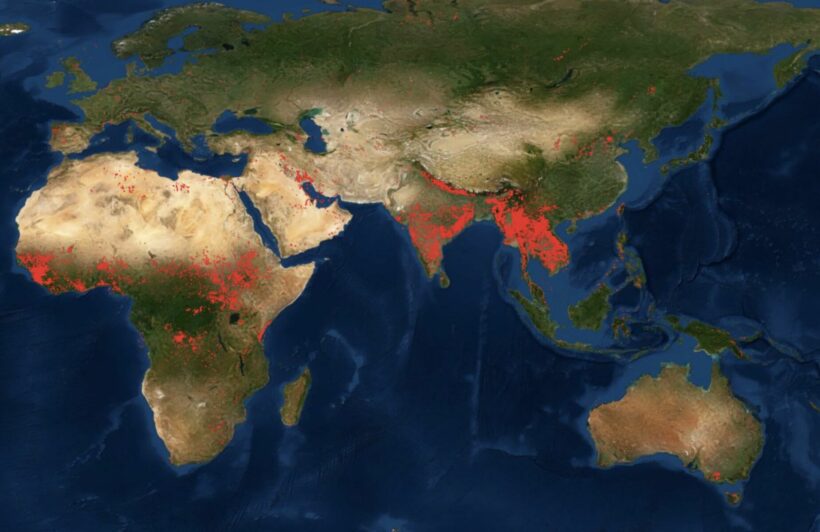
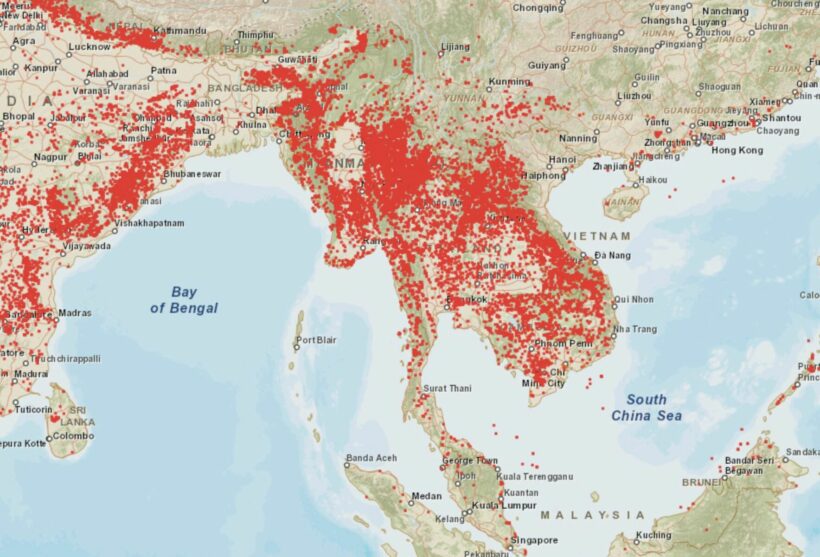
Latest Thailand News
Follow The Thaiger on Google News:
